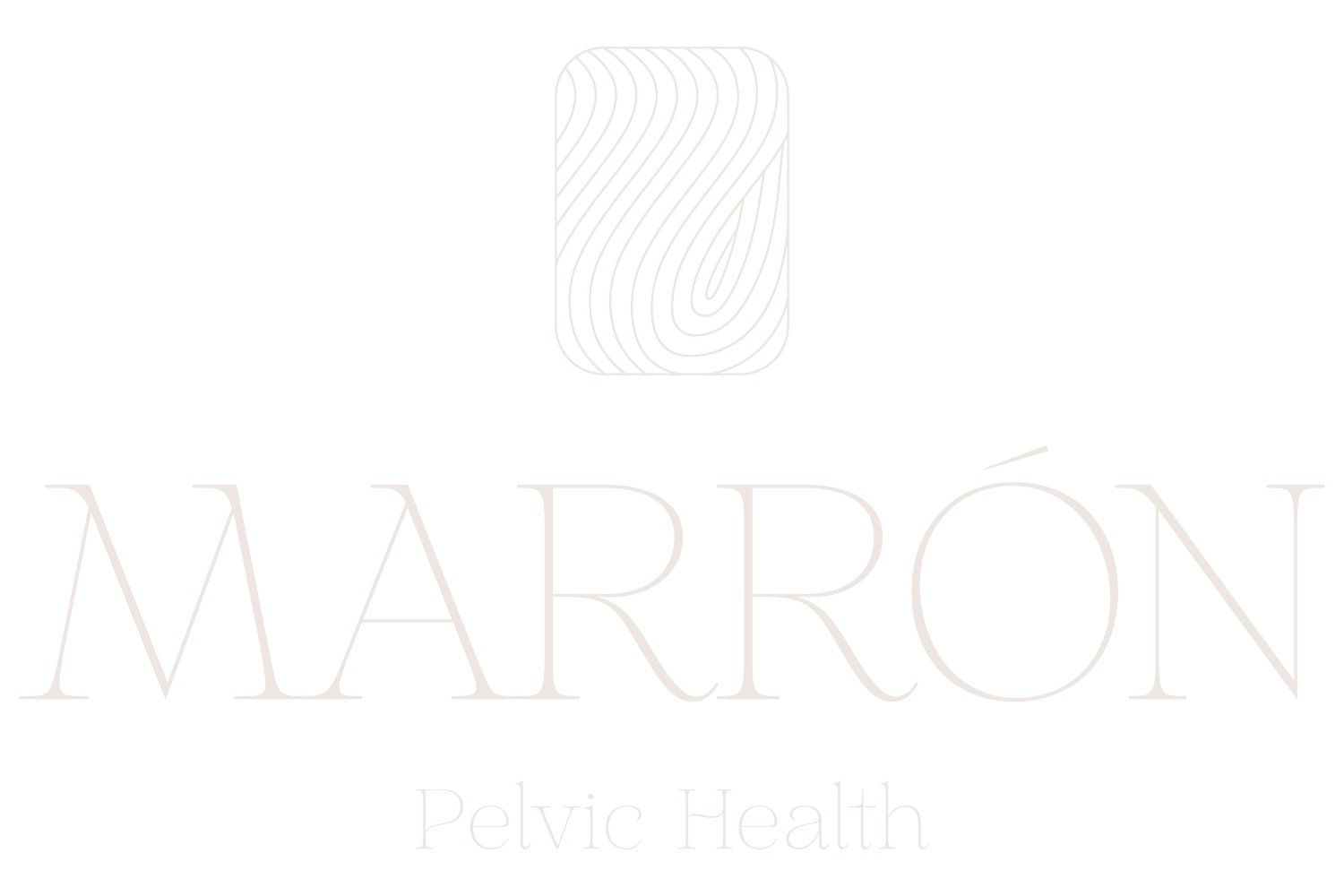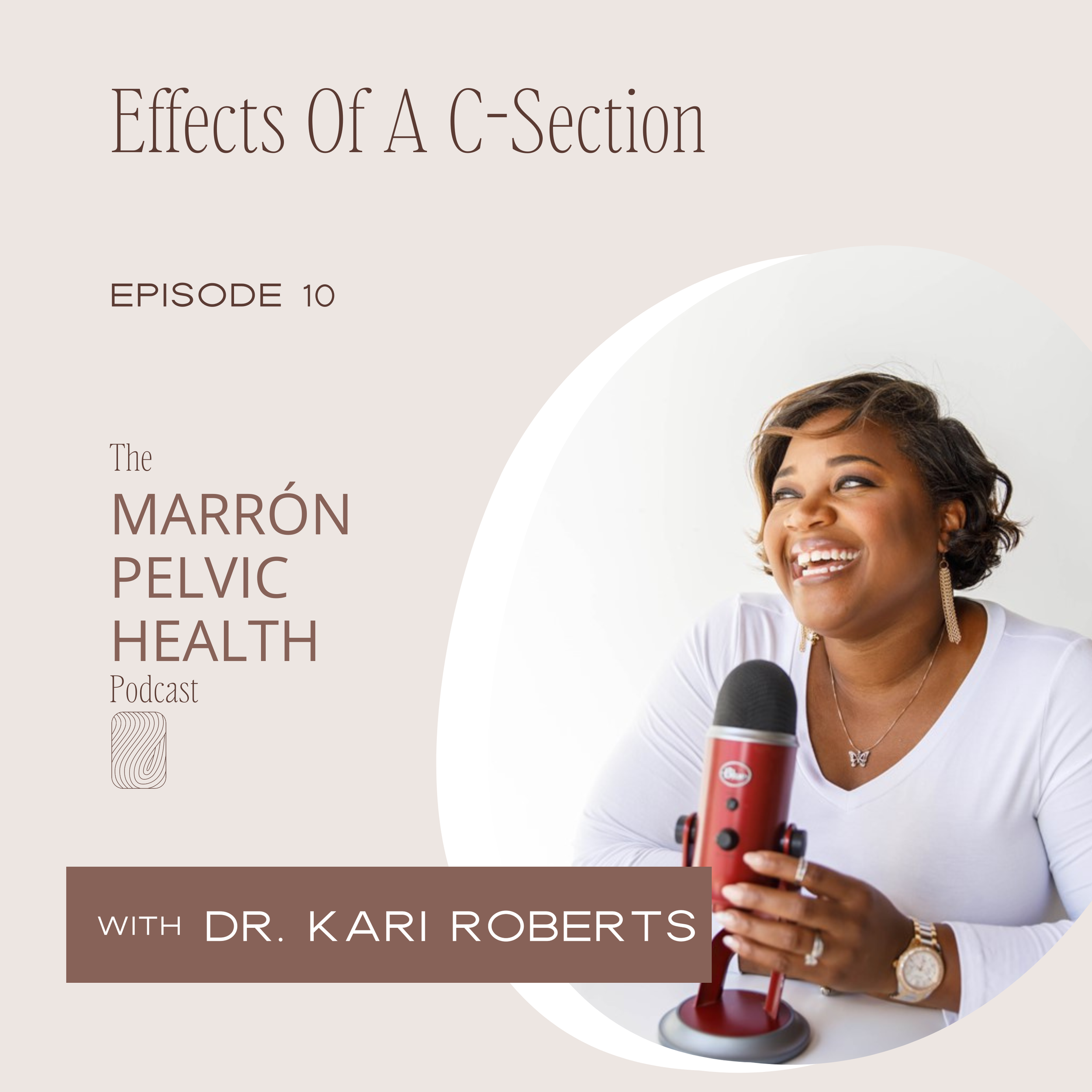Effects Of A C-Section - Episode 10
In this episode, I will discuss the 7 layers that are impacted by a Cesarean Section.
Skin
Subcutaneous fat
Abdominal muscles
Fascia
Uterine wall
Amniotic Sac
Bladder (moved out of the way)
-
[00:04] Dr. Kari: Welcome to the Morone Pelvic Health Podcast. Hi, I'm your host, Dr. Carrie Roberts.
[00:09] Dr. Kari: On this show we will be discussing.
[00:11] Dr. Kari: A variety of things regarding your pelvic health. These conversations will be a mix of education, personal experiences, and a blend of tips you can apply to have a healthier pelvis. The goal of this show is to normalize conversations around pelvic health and help women stop suffering in silence.
[00:33] Dr. Kari: Thank you so much for coming back to this episode. I'm very excited to get into the layers that are impacted the effects of having a C section. Many women have c sections. Hundreds of thousands of C sections are done all over, everywhere. It's kind of common practice, especially in Western medicine, and a lot of tissues are impacted and people may not necessarily know. When I speak with friends and family, even people that have had C sections, sometimes they aren't exactly clear on what types of tissues are involved or really impacted by having a C section. This is a podcast which is an audio show and I do repurpose this content to YouTube. And this is one of those episodes where if you have access to YouTube, you might want to click over and watch the episode on YouTube because I'm going to be using a visual aid to explain through the seven, yes, seven layers of tissue that are impacted by having a C section. The first one was pretty obvious. It's your skin. The skin is the outermost layer of our body. It's the largest organ in our body. So the skin has to be cut in order to get to that baby. Next, under the skin we have subcutaneous fat. That's just how all of us are made. Regardless of how healthy or not healthy, thin or not thin you are. We all have subcutaneous fat under the fat layer. Then the next thing we have is actually our abdominal muscles. So across that lower area, our abdominal muscles attach to the hip girdle and the big muscles, the big abdominal muscles that we can see, the ones that are your four pack or your six pack, it's actually called your rectus abdominus. And the rectus abdominus, there's a left and a right. Those usually aren't cut, they're usually spread apart. There is connective tissue or fascia in between the two that connect the two. And usually that is spread apart to make room to be able to take the fetus out. Next. After that we have the fascia, the connective tissue that's actually underneath the rectus muscles, abdominal muscles. Then next we have the actual uterus, the uterine wall, which where the baby has been growing. And then you've got the amniotic sac. All of that stuff has to be cut with the exception of your rectus muscles which have to be pulled apart. And then we also have the bladder sits in front of the uterus. The bladder sits very low in our pelvic girdle, very low in the front and since the incision is so low, the bladder needs to usually be lifted and pulled out of the way. So the bladder should not be impacted. But sometimes the connective tissue, the fascia around the bladder, will be cut so that the bladder can detach from the other connector tissue and your uterus. So then the doctor has enough room to pull the baby out. So that's seven layers of tissue. Now, every time you are cut or have a procedure, it's still trauma to your body. It might be controlled trauma. Sometimes when people think of trauma with a body, you're thinking of an accident or a fall or something like that, but having surgery is still trauma. It's just something that's a little more controlled in a sterile environment. But think there are seven different layers of tissue that have undergone trauma to take the baby out of the mom. Which means there are seven layers of tissue that have to heal in order for mom to be able to a take care of her baby, b take care of herself and C return to her life that she knew prior to having her baby. That's a lot, right? That's a lot. Now, if someone has abdominal surgery, just laparoscopic where they just go in with a couple of puncture holes like a gallbladder removed or appendix removed, that person might still be sent home with bed rest for a week or two for their body to recover. Now, mom usually has a five or six inch long scar across her lower abdomen and is sent home to recover from this major surgery and take care of a new human life. That's kind of a lot. So it's very important to understand the tissues that are impacted and understand that if you've got fascia that's been impacted, the stability inside of your abdomen might not be quite the same. After you have a C section, your rectus abdominus muscles are pulled apart, which means your abdominal muscles aren't working and contracting the way that they usually do. You've got changes with your skin and the fascia and the subcutaneous fat. And a lot of times when we have scarring that's laid down its generic tissue and over time our body remodels that tissue and to help it be more supple and stretchy like skin or muscle. The same thing happens with your abdomen. Sometimes those scars can heal very tight and they need some external forces for them to loosen up and get supple again. So I hope this helps you. I do have this picture here and this just kind of shows all of the tissues. So we've got the skin here, we've got the fat layer here, subcutaneous fat. The red is the rectus muscles that have been pulled apart. Then we've got the uterus here and we've got the amniotic sac there. And through all of that the baby is able to be pulled out. So I hope that was helpful. Hopefully that answers any other questions you have about muscles and tendons? Not really tendons, but muscles and tissues that are impacted by C section and come back next week because I'm going to explain a little bit more detail on how people that have C section scars can manage those scars and have better healing. So thank you so much for tuning in, and I'll be back with another episode next weekend. Thank you for listening to this episode.
[07:07] Dr. Kari: Of The Moron Pelvic Health Podcast. Please do me a favor and leave a review so that more people can find this content and make sure you like and subscribe yourself so you never miss another episode.

